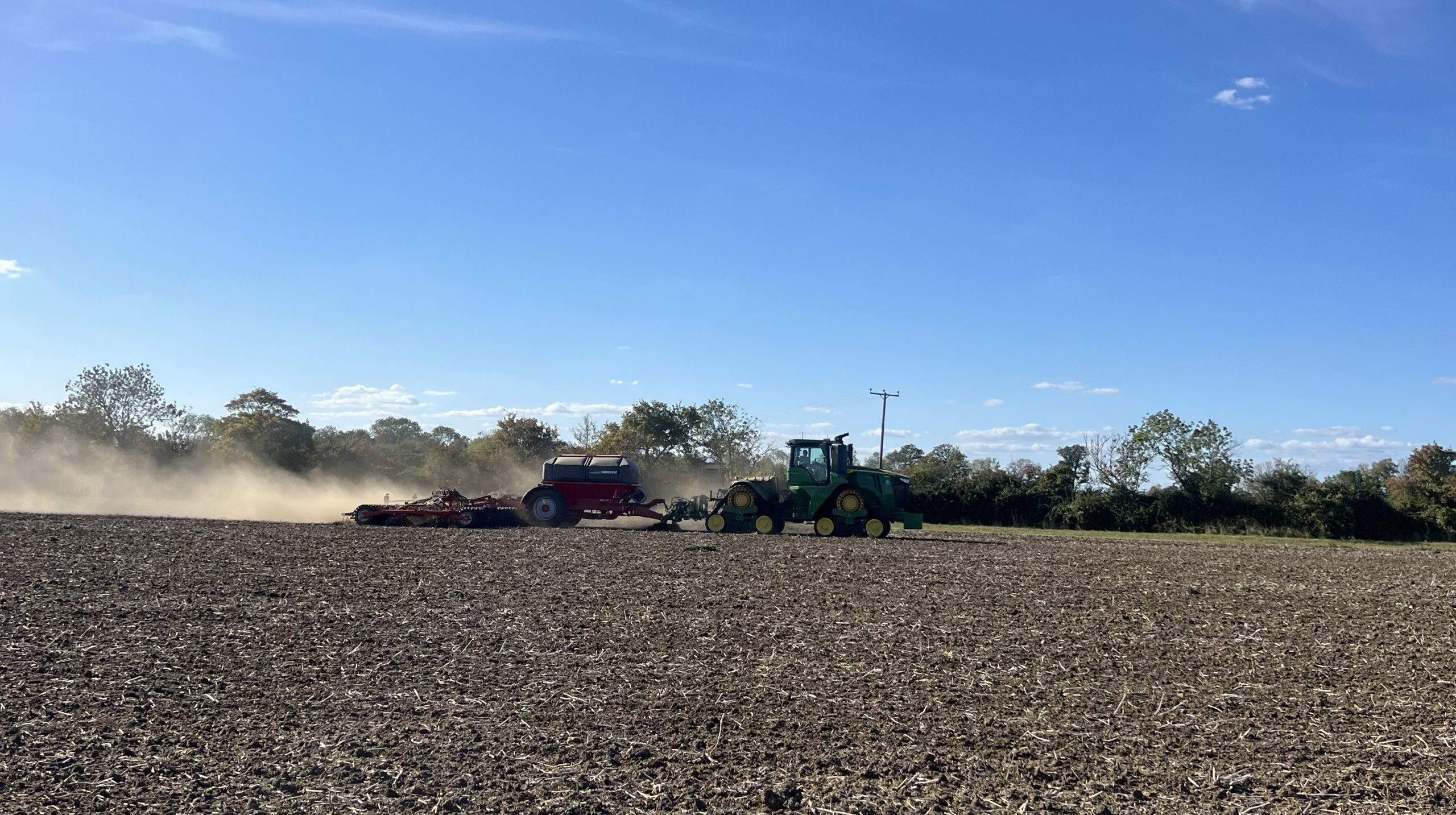Louise Penn is an independent agronomist and farm consultant working at Ceres Rural, covering Northamptonshire, Bedfordshire and parts of Cambridgeshire.
Louise grew up on her family’s tenanted 550ac mixed farm in Northamptonshire but always knew she wanted to be an agronomist. Now into her sixth season, she shares her views on early drilling and grass weed control.
Drilling underway despite black-grass potential to chit
“Many clients have rain gauges on farm, and in the last two months we’ve only had 70mm. That compares with 165mm in the same period last year, when a large proportion of autumn 2024’s rain fell in September. That has set the tone for this year. With growers acutely aware of the challenges of drilling in wet conditions, they are now taking advantage of this season’s drier soils.
“It’s not just fear of the weather window closing that is driving earlier drilling. Some growers are facing financial pressure and want to ensure crops are safely in the ground. Farms and contractors with large acreages to drill are understandably wanting to make a start too, as are those with clean fields, and the growers with heavy land.
“However, there are also people starting to drill who have bad grass weed issues and the capacity to complete drilling in just five days. While there is rain in the forecast, it is still relatively early in the drilling season and it is worthwhile holding on.
“It is about balancing the risk between not getting the crop established and the potential need to spray off crops due to the black-grass that has chitted within the crop and couldn’t be controlled.
“While conditions have been dry, it has been surprising how much black-grass has chitted. It is supposed to be a low dormancy year, and where people have moved soil to encourage grass weeds to germinate there have been good flushes.
“But I do think – and this is why I am worried about people drilling now – as we get more rain, we will get another flush and that will come up within the crop.
Cultural controls give growers upper hand
“Over recent years, growers in my area have used a wide range of tactics to get on top of black-grass. Many IPM measures have become commonplace. For example, extending rotations, using alternate chemistry in break crops, improving hygiene, stopping weeds from encroaching from field margins by spraying off and topping, delaying drilling and using the right chemistry when they need to.
“It is well recognised that there is little you can do to control black-grass in spring so it really is important to get it right in the autumn. We’ve also had some seasons where the weather has forced growers to drill a lot later.
“Cultural controls come first. Often, they are the most cost-effective option though they take a little longer and require a little planning. However, nothing beats the plough for giving you a fresh start.
“As a result of a good grass weed strategy, growers are now largely on top on black-grass. Hopefully that won’t all be undone this year, with the earlier drilling and the potential for more grass weeds to come – I suspect we’re only at the beginning of the bell curve of black-grass germination.
“With cultural controls the mainstay of reducing black-grass, chemistry is the final piece of the puzzle.
“Luximo is one of the best actives for black-grass. So, I’m going to use it where I can get the most control from it and that means waiting for moisture and the increased likelihood of black-grass chitting.
“When building programmes this autumn, I’ve also been conscious that high UV, soil or air temperature may contribute to faster break-down of some residual chemistry.”
Louise’s 3 tips for grass weed control:
- Don’t drill too early – if you can drill your farm in five days and the long-range forecast is dry, delay drilling.
- Establish good seedbeds – fine, even, consolidated seedbeds, combined with good drilling depth and soil to seed contact, has a big effect on both crop establishment and residual performance. It also reduces the likelihood of clods breaking down and releasing more grass weed seed to germinate.
- Be flexible and keep in close contact with your agronomist – to ensure best results, it is crucial to maintain flexibility and keep in close communication with your agronomist. Changes in conditions can necessitate adjustments in your approach, and being prepared to modify spray timings, rates, and product selection is essential. While it is important to have a well-defined autumn herbicide strategy, do not feel strictly bound to it. Prioritise the needs of the crop and be prepared to go the extra mile!

